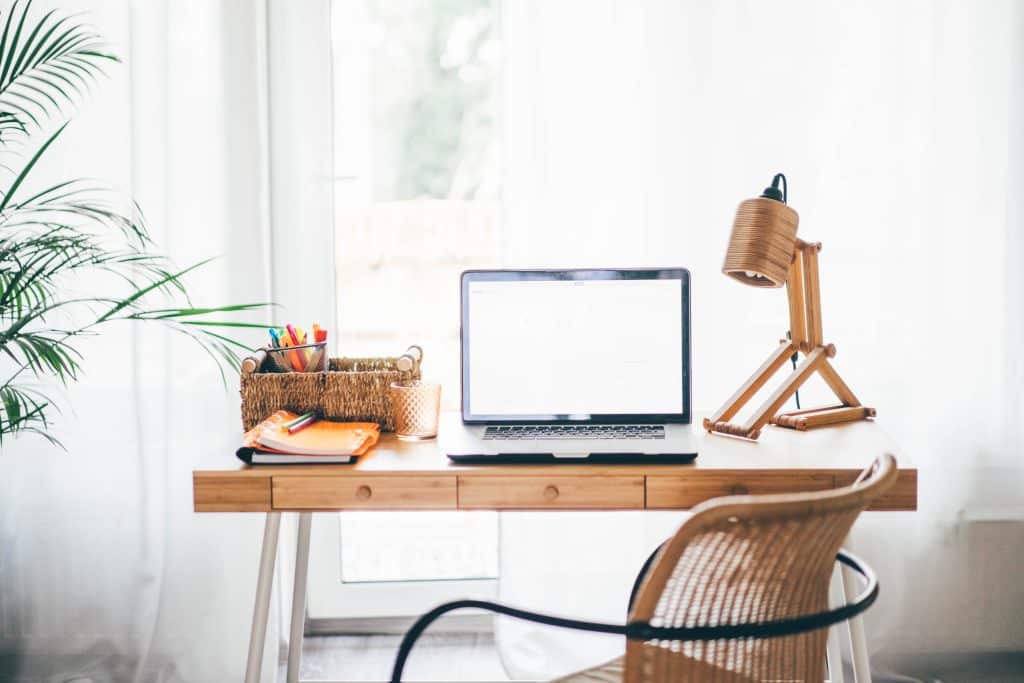In today’s world, having a productive workspace at home is not just a luxury, but a necessity. With an increasing number of individuals shifting towards remote work and freelance jobs, creating an environment conducive to productivity has become paramount. This blog post will help you understand why having a suitable workspace is essential and provide you with practical, easy-to-implement tips to create your perfect productive workspace at home.
Contents
- 1 Understanding The Importance Of A Productive Workspace
- 2 How To Create A Productive Workspace At Home
- 3 Choose The Right Location
- 4 Comfort Is Key
- 5 Invest In Quality Equipment
- 6 Keep It Organized
- 7 Personalize Your Space
- 8 Manage Your Technology
- 9 Incorporate Natural Elements
- 10 Establish Boundaries
- 11 Make A Productive Workspace At Home Today!
Understanding The Importance Of A Productive Workspace

A well-organized and thoughtfully designed workspace is a powerful tool to boost your productivity. It provides a physical structure that encourages discipline and focus, thereby enhancing the quality of your work. Furthermore, it can have a significant impact on your time management and stress levels, influencing your overall job satisfaction.
Moreover, the impact of your physical environment on your mental health and overall work quality can’t be overemphasized. A disorganized, noisy workspace could lead to mental clutter, reduce your concentration, and increase stress levels. Therefore, investing your time and resources into creating a productive workspace is essential for your well-being and professional success.
How To Create A Productive Workspace At Home
Moving on to practical aspects, let’s delve into actionable tips and strategies to create a productive workspace at home.
Choose The Right Location

Selecting an optimal location for your workspace dramatically impacts your productivity. Ideally, this area should be quiet, well-illuminated, and free from interruptions, thereby allowing you to concentrate. Noise levels, privacy, and the availability of natural light are fundamental factors to bear in mind.
It might seem challenging to find a perfect spot due to home layout and size restrictions, but using a creative approach can open up surprising options. Perhaps there is a spare bedroom that could be utilized, a tranquil corner in your living room, or maybe a seldom-used closet that could be converted. All of these can serve as suitable workspace options.
Comfort Is Key

A significant element that often goes overlooked in a home workspace is comfort. Ergonomically designed furniture that supports your posture can be a game-changer. This can help prevent health issues such as backaches and neck strain, which are common problems associated with long sitting hours.
If you’re on a tight budget, alternatives like cushion supports for your chair, adjustable laptop stands, or even DIY standing desks can be considered. These can still provide the necessary comfort required for long work hours. Remember, an uncomfortable workspace will only hamper your productivity, so it’s crucial to prioritize comfort in your home office.
Invest In Quality Equipment

An investment in good-quality equipment is an investment in your productivity. Whether it’s a computer with enough processing power to handle your tasks, a noise-canceling headset for clear communication, or an external monitor for better visibility, having the right tools can significantly boost your efficiency and performance.
Depending on your job’s nature, the type of equipment you need will vary. However, regardless of your role, don’t overlook the importance of reliable and high-speed internet – a crucial requirement for virtually all work-from-home setups. While upfront costs may seem high, remember that these are long-term investments. Over time, these tools will more than pay for themselves in the form of increased productivity and reduced stress.
Keep It Organized

Maintaining an organized workspace can significantly influence your productivity levels. When your workspace is clutter-free, you’re likely to be more focused and less stressed. Aim to declutter your desk daily and establish a robust paper management system for a more organized workspace.
If necessary, invest in desk organizers or storage solutions. These could help with managing your stationery, documents, and cables. You could also use labels and color codes to keep everything in place. These might seem like small changes, but a well-organized workspace could save you from wasting time searching for things and can provide you with a sense of control and order.
Personalize Your Space

While setting up your workspace, remember that it should reflect you. Personalizing your workspace can make it more inviting and comfortable, which in turn can increase your productivity levels. This doesn’t mean you have to spend a lot on fancy decor.
Simple things like a photo of your loved ones, a piece of art that you love, or even motivational quotes could go a long way. You could also consider adding a plant or two to your workspace for a touch of nature. However, remember that while personalizing your space, it is essential to maintain a balance. Overcrowding your workspace with too many personal items could make it look cluttered and cause distractions.
Manage Your Technology

In today’s digital age, technology forms the backbone of most workspaces. From computers to smartphones, these devices aid your work in countless ways. However, they can also contribute to workspace clutter. Hence, managing your technology effectively becomes crucial for maintaining a productive workspace.
This includes organizing your digital files in a systematic manner and controlling the web of wires that usually accompanies these devices. If left unchecked, you could end up wasting precious time searching for files or untangling cords. Consider using cable management solutions to keep your workspace neat. Also, make it a point to keep your desktop clutter-free, both physically and digitally.
Incorporate Natural Elements

Bringing elements of nature into your workspace can significantly enhance its aesthetic appeal and improve productivity. Natural light is a mood enhancer and can boost your productivity. So, if possible, set up your workspace near a window.
If that’s not feasible, investing in a daylight lamp can mimic the effect of natural light. Plants are another way of incorporating nature into your workspace. They not only improve the air quality but also add a calming effect to your surroundings. Some easy-to-maintain indoor plants include Snake Plants, Spider Plants, and Pothos.
Establish Boundaries

Establishing boundaries is vital for a home workspace. It’s easy to blend personal life with professional life when working from home, but doing so can affect productivity. Try setting specific work hours and communicate them to the people you live with.
Creating a physical separation for your workspace can also help mentally distinguish your professional life from your personal life. Make sure that once you step out of your workspace, work doesn’t follow you. This can prevent work from overwhelming your personal life and help maintain a healthy work-life balance.
Make A Productive Workspace At Home Today!
In conclusion, creating a productive workspace at home involves a thoughtful amalgamation of various elements. It requires an understanding of your work style and preferences, followed by implementing these insights to design a workspace that enhances your productivity and job satisfaction. So, take the time to carefully build your workspace today! With a comfortable and convenient setup, you can enjoy improving your efficiency and performance.


